Hypholoma lateritium
Scientific name: Hypholoma lateritium (Schaeff.)
P. Kumm.
Derivation of name: laterit- means "brick-colored,"
referring to the brick-colored central portion of the cap.
Synonyms: Hypholoma sublateritium (Fr.) Quel.,
Naematoloma sublateritium (Fr.) P. Karst.
Common name(s): Brick cap; brick tops.
Phylum: Basidiomycota
Order: Agaricales
Family: Strophariaceae
Occurrence on wood substrate: Saprobic; in clusters
on
decaying deciduous stumps, logs, or standing dead
trees;
August through November.
Dimensions: Caps 4-10 cm wide; stipes 4-10 cm long
and
0.5-1.5 cm thick.
Cap: Moist; brick-red but paler toward margin. The cap
surface stains brownish in KOH.
Gills: Attached; whitish at first, then pale gray and
finally purple-brown as the spores
mature.
Spore print: Purplish-brown.
Stipe: Whitish or pale yellow above, grayish to brownish
to
reddish brown toward the base; sometimes staining
yellowish where bruised.
Veil: A cobweb-like partial veil is present covering the
gills on young specimens. The partial veil leaves a
fibrous zone near the stalk apex which may become
purple-brown following deposition of the dark spores.
Edibility: Field guides give mixed reviews as to the
edibility
of this mushroom.
Comments: Hypholoma capnoides is a similar
species
but grows on conifer wood and has a yellowish-brown
to tan to orangish-brown cap. See the following web sites
for additional information on these species.
More information at MushroomExpert.com
More information at MushroomExpert.com
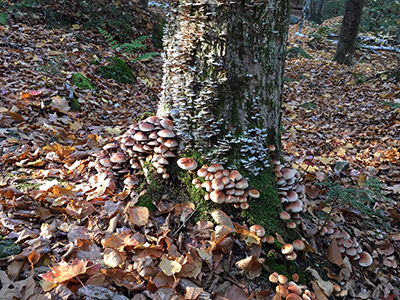
Figure 1. Clusters of
Hypholoma lateritium surround the
base of this tree. Photo © Gary Emberger.
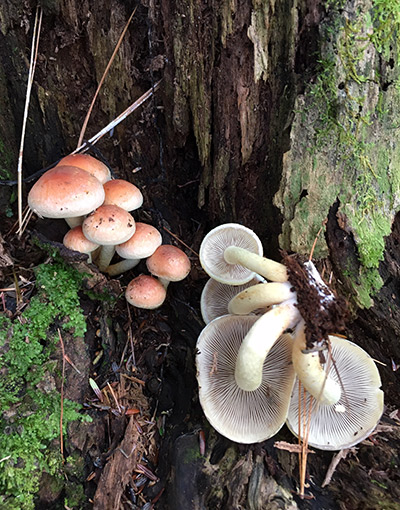
Figure 2.
The brick-red coloration of the caps and the
clustering of the stipes are good field characteristics.
Photo © Gary Emberger.
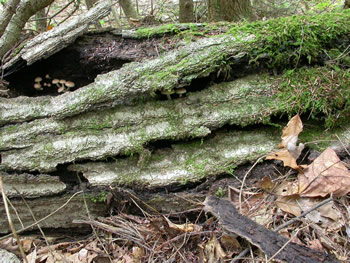
Figure 3. Brick tops growing inside a hollowed,
well-rotted log. Photo © Gary Emberger.
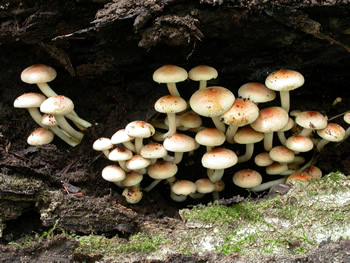
Figure 4.
Closeup of Hypholoma lateritium with the
bark removed
from the
log in Figure 3. Note the pale
coloration, likely due to the dark environment inside
the hollowed log. Photo © Gary Emberger.
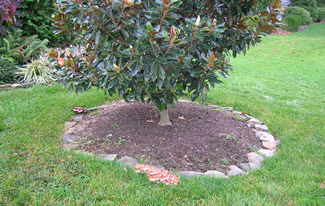
Figure 5. Hypholoma lateritium growing near an
ornamental magnolia tree.
A pin
oak tree (Quercus
palustris) was removed from this location the year
before. The
mushrooms are undoubtedly growing
from its dead roots.
Photo © Gary Emberger.
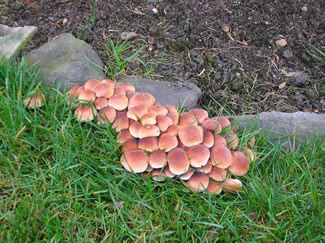
Figure 6. Close-up of the mushroom cluster in
Figure 5. Photo © Gary Emberger.
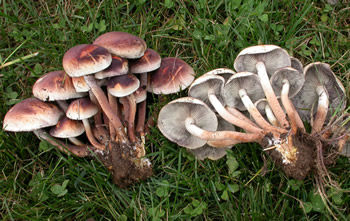
Figure 7. The large
cluster in Figure 6 was made up of
a couple smaller clusters.
Photo © Gary Emberger.
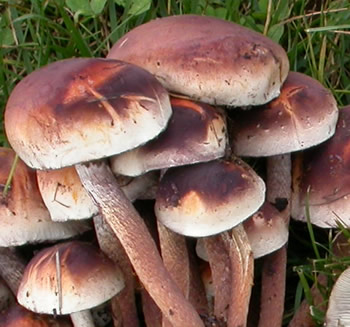
Figure 8. In a tight cluster of fruit bodies, such as in
Figure 7, spores may be deposited on the caps of
mushrooms
positioned below the gills of the mushrooms
above.
The dark purple-brown spore deposits
observed
on these caps provide a convenient
"field" spore print.
Photo © Gary Emberger.
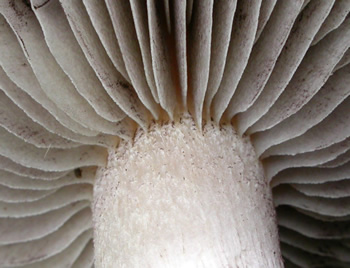
Figure 9. Hypholoma lateritium has attached gills.
The purple-brown spores are evident on the light
colored gill surfaces. Photo © Gary Emberger.

Figure 10.
The partial veil may leave a fibrous zone near
the
stalk apex. This zone may become purple-brown
following
deposition of
spores. Because the presence of
this annular
zone is a variable trait, this species keys out
with mushrooms
having partial veils and with those
lacking
veils. Photo © Gary Emberger.
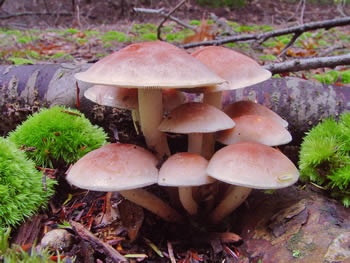
Figure 11. A photogenic cluster of brick tops.
Photo © David Work.
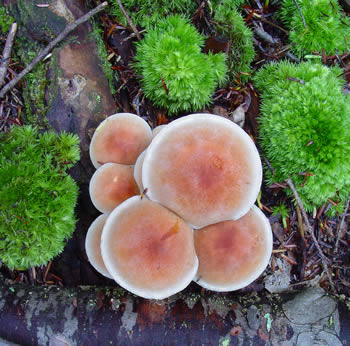
Figure 12. The brick tops of Figure 11 viewed from
above. Photo © David Work.

Figure 13. This gnome looks forward to a
feast of
brick caps. Photo © Gary Emberger.